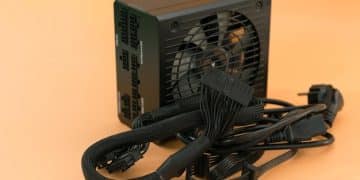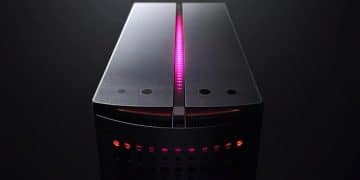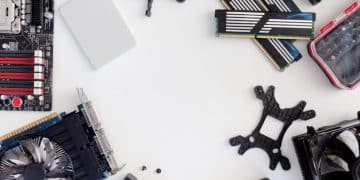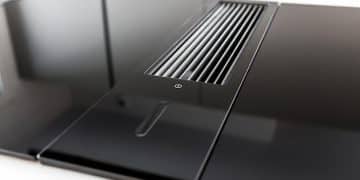Power Supply Units: Choosing Wattage & Efficiency
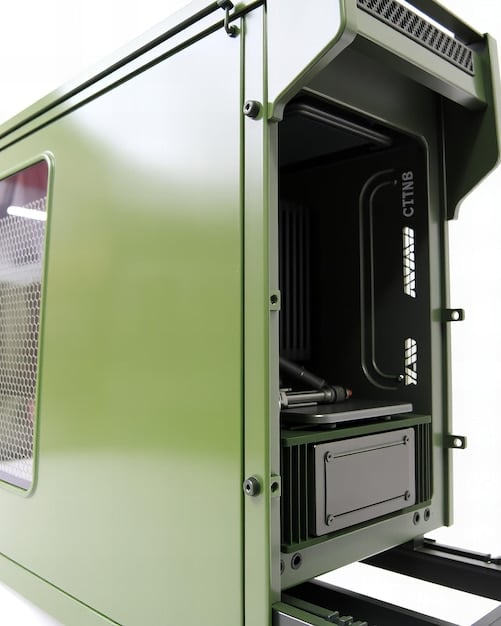
Selecting the appropriate power supply unit (PSU) involves a critical balance of wattage for system component compatibility and efficiency ratings for optimal power consumption and thermal performance, directly impacting system stability and longevity.
Embarking on a new PC build, or perhaps upgrading an existing one, brings a myriad of decisions. Among the most crucial, yet often overlooked, is the selection of the power supply unit. Understanding Power Supply Units (PSUs): How to Choose the Right Wattage and Efficiency Rating for Your Build is paramount, as this component is the heart that delivers the necessary electricity to every other part of your system.
understanding the Role of a Power Supply Unit
The power supply unit (PSU) serves as the unsung hero of your computer system. It is not merely a box that sits quietly in the corner of your case; it is the crucial component responsible for converting the alternating current (AC) from your wall outlet into direct current (DC) that your computer’s components can use. Without a reliable and appropriately sized PSU, even the most cutting-edge CPU or GPU would be rendered useless. Its primary function extends beyond simple conversion, encompassing voltage regulation, power distribution, and protection against electrical fluctuations.
Think of the PSU as the central nervous system of your PC. Every component, from the motherboard and processor to the graphics card and storage drives, draws its energy from this single source. An unstable or insufficient power supply can lead to various issues, ranging from system crashes and random reboots to component damage and reduced longevity. This makes the proper selection of a PSU not just a recommendation, but a fundamental requirement for a stable and efficient computer system. Neglecting this crucial component often translates into unforeseen headaches down the line.
The Foundation: AC to DC Conversion
The fundamental task of a PSU is transforming the high-voltage AC current from a wall socket into the low-voltage DC current required by PC components. This process involves multiple stages of rectification and filtering to ensure clean and stable power delivery. Different components within the PC require specific voltage levels, such as 12V for the CPU and GPU, 5V for drives, and 3.3V for RAM, and the PSU carefully supplies each.
Power Distribution and Protection
Beyond conversion, a PSU meticulously distributes power to each component through a series of connectors. Modern PSUs often feature multiple 12V rails to provide dedicated power to hungry components like high-end graphics cards, ensuring stable performance under heavy load. Critically, PSUs also incorporate various protection circuits, guarding against over-voltage, under-voltage, over-current, and short circuits. These protections are essential to prevent damage to expensive hardware in the event of an electrical anomaly.
The reliability of your PSU directly correlates with the overall stability and lifespan of your entire PC. A high-quality PSU provides consistent power delivery, minimizing ripples and fluctuations that can degrade component performance or cause premature failure. Investing in a reputable PSU model not only secures your hardware but also contributes to a quieter, cooler, and more reliable computing experience. Its impact resonates throughout the system, making it a cornerstone of any truly robust PC build.
Calculating Your Wattage Needs
One of the most common questions when choosing a PSU revolves around wattage. Determining the correct wattage is not an arbitrary choice; it is a meticulous calculation based on the power requirements of every component in your system. An undersized PSU will lead to instability, system crashes, and potential hardware damage due to insufficient power delivery, especially during peak loads. Conversely, an oversized PSU, while harmless, can be an unnecessary expense and might operate less efficiently than a properly matched unit due to not hitting its peak efficiency curve. Therefore, finding that “sweet spot” is essential for both performance and cost-effectiveness.
The process begins by identifying the maximum power draw of your CPU, GPU, motherboard, RAM, storage drives, and any peripherals like fans or RGB lighting. Manufacturers often provide “Thermal Design Power” (TDP) for CPUs and recommended PSU wattage for GPUs. While TDP is primarily a thermal metric, it offers a general idea of power consumption under typical loads. For GPUs, checking the manufacturer’s specifications for “minimum required PSU wattage” is crucial. These are often conservative estimates to ensure compatibility across a wide range of systems.
To get a more precise estimate, online PSU calculators are invaluable tools. Websites from PSU manufacturers or PC component retailers typically offer these calculators, allowing you to input your specific components. These tools aggregate the power draw of each part and recommend a total system wattage, usually adding a buffer for future upgrades and system stability. It is always wise to aim for a PSU that provides at least 20-30% more wattage than your calculated total peak load. This headroom allows for occasional power spikes, component aging, and potential future upgrades without immediately needing a new PSU.
Component Power Consumption Overview
- CPU: Power draw varies significantly by model, from 65W for efficiency-focused processors to 250W+ for high-end gaming or workstation CPUs under load.
- GPU: The most power-hungry component. Entry-level cards might consume 75W, while top-tier GPUs can demand 300-500W or more. Always check manufacturer specifications.
- Motherboard: Consumes a relatively consistent amount, usually between 25-60W, depending on built-in features and chipset.
- RAM: Each stick typically uses 3-5W. For example, 4 sticks of DDR4 RAM would add around 12-20W.
- Storage: SSDs consume very little (2-5W each), while HDDs can draw slightly more (5-10W each) due to mechanical parts.
- Fans & Peripherals: Each case fan typically uses 1-3W. USB devices, RGB lighting, and other peripherals add minor but cumulative power draw.
Once you have a rough estimate, consider the transient loads—brief, intense power spikes—that components, especially GPUs, can demand. These spikes, lasting only milliseconds, can exceed typical power draw, potentially tripping the PSU’s over-current protection if insufficient headroom is available. Therefore, the 20-30% buffer is not just for upgrades but for ensuring stability during these transient events. This approach ensures your system remains stable even under the most demanding conditions, protecting your investment in high-performance components.
Understanding Efficiency Ratings: 80 PLUS Certification
Beyond wattage, the efficiency of a power supply unit is a critical factor that significantly impacts both your electricity bill and the thermal environment inside your PC case. This is where the 80 PLUS certification comes into play. The 80 PLUS program, started in 2004, is a voluntary certification standard that evaluates PSUs based on their energy efficiency. A PSU with an 80 PLUS certification indicates that it is at least 80% efficient at 20%, 50%, and 100% of its rated load. This means that at least 80% of the power drawn from the wall outlet is converted into usable DC power for your computer components, with the remaining 20% being dissipated as heat.
The tiers of 80 PLUS certification—Standard, Bronze, Silver, Gold, Platinum, and Titanium—represent increasing levels of efficiency. Each tier requires progressively higher efficiency percentages across the load spectrum. For example, an 80 PLUS Gold certified PSU is at least 87% efficient at 20% load, 90% at 50% load, and 87% at 100% load. The higher the efficiency rating, the less power is wasted as heat, leading to several tangible benefits. These include lower electricity consumption, which translates to savings on your utility bills over time, and reduced heat generation inside the PC case. Less heat means less reliance on noisy fans, potentially leading to a quieter system and a cooler internal temperature, which can prolong the lifespan of other components.
While higher efficiency PSUs generally come with a higher price tag, the return on investment can be significant, especially for systems that run for extended periods or under heavy loads. For a casual user, an 80 PLUS Bronze or Silver unit might be sufficient. However, for serious gamers, content creators, or anyone building a high-performance machine, an 80 PLUS Gold or Platinum PSU is often a worthwhile investment. It’s a balance between upfront cost and long-term operating expenses, with added benefits of system stability and reduced thermal strain.
80 PLUS Certification Tiers Explained
The 80 PLUS rating system uses a spectrum of bronze to titanium to denote efficiency at various loads.
- 80 PLUS Bronze: At least 82% efficient at 20% load, 85% at 50% load, and 82% at 100% load. A good entry point for general use.
- 80 PLUS Gold: At least 87% efficient at 20% load, 90% at 50% load, and 87% at 100% load. Offers a great balance of cost and efficiency for most users.
- 80 PLUS Platinum: At least 90% efficient at 20% load, 92% at 50% load, and 89% at 100% load. Excellent for high-end builds where efficiency is paramount.
- 80 PLUS Titanium: The highest tier, requiring 90% efficiency at 10% load, 92% at 20% load, 94% at 50% load, and 90% at 100% load. Represents the absolute best in efficiency, often found in professional workstations or servers.
It’s important to remember that a PSU is most efficient around 50% of its maximum load. Therefore, when calculating wattage, slightly oversizing your PSU to operate closer to this optimal efficiency point can yield better results in the long run. For instance, if your calculated maximum load is 400W, a 650W or 750W PSU would operate within its most efficient range during typical usage, reducing heat and power waste. This strategic selection enhances overall system performance and contributes to a sustainable computing environment.

Modular vs. Non-Modular vs. Semi-Modular PSUs
When exploring power supply units, you’ll inevitably encounter terms like modular, non-modular, and semi-modular. These terms refer to how the cables are attached to the PSU unit itself, and each design offers distinct advantages and disadvantages that can influence the build process, cable management, and even airflow within your PC case. Understanding these differences is crucial for making an informed decision that aligns with your specific needs and priorities.
A non-modular PSU is the most basic and typically the least expensive option. With this design, all cables are permanently attached to the power supply unit. While this simplicity might appeal to budget-conscious builders, it often leads to a cluttered case. You’re left with all the cables, whether you need them or not, which can make cable management a nightmare, especially in smaller cases. The excess, unused cables can obstruct airflow, potentially leading to higher internal temperatures. However, for very basic builds or situations where aesthetics and meticulous cable management are not a priority, a non-modular PSU can be a cost-effective choice.
On the other end of the spectrum is the fully modular PSU. As the name suggests, every single cable detaches from the unit. This design offers unparalleled flexibility and ease of installation. You only connect the cables you need for your components, significantly reducing clutter inside the case. This not only makes for a much cleaner and more aesthetically pleasing build but also greatly improves airflow, contributing to lower operating temperatures and potentially extending component lifespan. While fully modular PSUs are generally the most expensive option, the benefits in terms of ease of assembly, airflow, and aesthetics often justify the higher price, especially for enthusiast builders or those who frequently upgrade their systems.
Bridging the gap between these two options is the semi-modular PSU. This design features essential cables, such as the 24-pin motherboard power and 8-pin CPU power cables, permanently attached, while all other peripheral and PCIe cables are detachable. Semi-modular PSUs strike a balance between cost and convenience. They offer much of the cable management benefits of fully modular units without the premium price tag. For most mainstream PC builds, a semi-modular PSU offers an excellent compromise, providing a clean build without breaking the bank. The choice ultimately depends on your budget, your desire for a tidy build, and the size of your PC case. For any builder who values aesthetics and efficient cooling, prioritizing at least a semi-modular design is highly recommended.
Overcurrent Protection and Safety Features
Beyond wattage and efficiency, the internal safety mechanisms of a power supply unit are non-negotiable considerations. A high-quality PSU doesn’t just deliver power; it actively protects your expensive components from various electrical anomalies. These built-in safety features are the silent guardians of your system, preventing potentially catastrophic damage from power surges, voltage fluctuations, or even internal component failures. Understanding these features is critical for ensuring the longevity and stability of your entire PC. Neglecting these aspects can lead to hardware failure and data loss.
One of the most important safety features is Overcurrent Protection (OCP). OCP monitors the current flowing through each output rail (e.g., 12V, 5V, 3.3V) and shuts down the PSU if the current exceeds a safe limit. This is especially crucial for modern systems where components like graphics cards can draw significant current, sometimes with sudden transient spikes. OCP prevents an excessive current draw from damaging the PSU itself or the connected components. Closely related are Overvoltage Protection (OVP) and Undervoltage Protection (UVP). OVP protects components from receiving too high a voltage, which can instantly fry sensitive electronics, while UVP prevents damage from an insufficient supply of voltage, which can cause instability or component malfunction. Both ensure that components receive power within their safe operating ranges.
Other vital safety features include Short Circuit Protection (SCP), which immediately shuts down the PSU if a short circuit is detected, preventing widespread damage; Overpower Protection (OPP), also known as Overload Protection (OLP), which monitors the total wattage output and shuts down if it exceeds the PSU’s maximum rated capacity; and Over Temperature Protection (OTP), which powers off the unit if its internal temperature becomes too high, often due to a fan failure or excessive load. Some PSUs also incorporate No Load Operation (NLO), ensuring stable operation even when components are drawing minimal power in idle states.
Choosing a PSU from a reputable manufacturer usually ensures that these essential safety features are implemented correctly and robustly. Never compromise on safety. A cheap, unbranded PSU might lack proper protection, putting your entire system at risk. Always look for certifications and reviews that confirm the presence and reliability of these safety mechanisms. It’s an investment in peace of mind and the long-term health of your PC. These protections, while often invisible in daily operation, are the bedrock of a truly resilient and dependable power delivery system for your valuable computer hardware.
Top Brands and Where to Buy
When it comes to selecting a power supply unit, the brand often dictates reliability, quality, and the robustness of safety features. While market trends can shift, certain manufacturers have consistently earned a reputation for producing high-quality, dependable PSUs. Opting for a reputable brand is often the safest bet, as these companies typically invest heavily in research, development, and stringent quality control, ensuring that their products meet specified wattage and efficiency ratings consistently and reliably. This translates into greater peace of mind for the consumer, knowing their expensive components are powered by a stable and secure source.
Among the leading brands frequently recommended by PC builders and enthusiasts are Corsair, known for a wide range of models from budget-friendly to high-end, often lauded for their reliability and excellent warranty support. Seasonic is another top-tier manufacturer, frequently praised for its exceptional build quality, electrical performance, and often serving as an OEM for other brands. EVGA offers a strong lineup, particularly for gaming-focused builds, with a reputation for solid performance and customer service. be quiet! lives up to its name, specializing in exceptionally quiet PSUs, often favored by users building silent PCs. Other notable brands include Fractal Design, Cooler Master, and Thermaltake, all offering competitive products across various segments of the market. While specific models within each brand may vary in quality, these companies generally maintain high standards across their PSU offerings.
When it comes to purchasing, consumers in the US have several reliable avenues. Major online retailers like Amazon and Newegg are prime destinations, offering vast selections, competitive pricing, and extensive user reviews. Newegg, in particular, is highly regarded within the PC building community for its focus on computer hardware. For those who prefer to see products in person or require immediate acquisition, brick-and-mortar stores like Micro Center provide an excellent resource, often boasting knowledgeable staff and a comprehensive inventory. Other electronics retailers, while perhaps not specializing in PC components, may also carry a limited selection of PSUs.
It’s also advisable to check manufacturers’ official websites for product specifications, warranty details, and sometimes even exclusive deals. Price comparison websites can help identify the best current deals across various retailers. Always be wary of unbranded or extremely cheap PSUs from unknown vendors, especially on marketplaces with less stringent vendor vetting. The adage “you get what you pay for” holds particularly true for power supplies. Investing in a quality unit from a trusted brand reduces risks and ensures the stable operation of your entire computer system for years to come, protecting your investment in other, more visible, components.
Common Mistakes to Avoid
Choosing a PSU might seem straightforward, but several common pitfalls can lead to suboptimal performance, instability, or even system damage. Being aware of these mistakes can save you time, money, and frustration in the long run. Building a reliable PC requires meticulous attention to detail, and the power supply, being the system’s foundation, demands particular care. Avoiding these errors is as important as understanding the technical specifications themselves, ensuring a smooth build and stable operation.
One prevalent mistake is underestimating wattage requirements. Many builders, especially novices, tend to eyeball power needs or rely on outdated general rules. This can lead to a PSU that simply cannot supply enough stable power under load, resulting in system crashes, reboots, or components throttling performance. Always use a reliable PSU calculator and add a buffer of 20-30% above your estimated peak load. This provides crucial headroom for transient power spikes and future upgrades. Another common error is over-spending on excessive wattage. While having too much wattage isn’t harmful, it means you’re paying for capacity you’ll never use. Furthermore, PSUs deliver their best efficiency around 50% of their load, so a grossly oversized unit might actually operate less efficiently for your typical usage. Strike a balance by considering your current and projected future needs.
Misinterpreting or ignoring efficiency ratings is another frequent oversight. Some builders might opt for a cheaper, less efficient PSU, not realizing the long-term impact on their electricity bill and the thermal environment of their PC. A low-efficiency PSU wastes more energy as heat, requiring more aggressive fan curves (leading to noise) and contributing to higher internal temperatures. Investing in an 80 PLUS Gold or Platinum unit pays dividends over time through reduced energy consumption and a cooler, quieter system. Finally, cutting corners on brand quality and safety features is perhaps the most dangerous mistake. Unbranded or exceptionally cheap PSUs often lack crucial safety protections like OCP, OVP, and SCP, making your entire system vulnerable to electrical faults. Such failures can incinerate components, void warranties, and potentially create fire hazards. Always choose a PSU from a reputable brand known for its safety and reliability features, even if it means a slightly higher upfront cost.
These mistakes highlight the importance of treating the PSU as a critical investment, not an afterthought. Research, careful calculation, and a focus on quality and safety will lead to a robust and long-lasting PC build. Overlooking these aspects puts your entire system at risk and defeats the purpose of investing in high-performance CPUs and GPUs. Taking the time to select the right PSU is a testament to a well-informed and responsible approach to PC building.
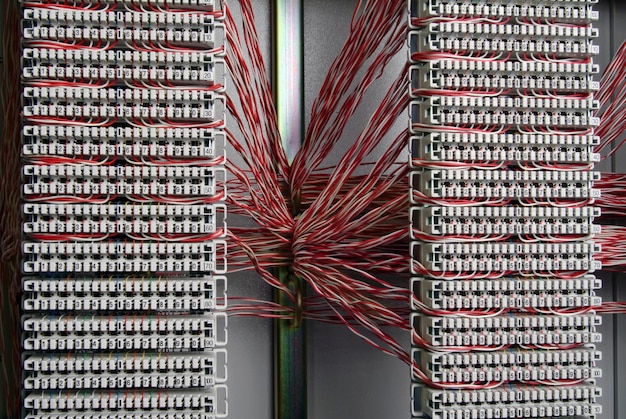
Maintaining Your PSU and System Lifespan
Once you’ve chosen and installed the perfect power supply unit, the journey doesn’t end there. Proper maintenance of your PSU and the surrounding system components is crucial for ensuring its longevity, maintaining optimal efficiency, and prolonging the lifespan of your entire PC. While PSUs are generally robust and low-maintenance components, a few simple practices can significantly contribute to their sustained performance and prevent premature failure. These practices often overlap with general PC maintenance, reinforcing the interconnectedness of your system’s health.
The primary enemy of any electronic component, including a PSU, is dust. Dust accumulates inside the PSU’s fan and heatsinks, acting as an insulating layer that traps heat. This forces the PSU’s fan to work harder and louder, potentially leading to higher internal temperatures and reduced efficiency over time. Regular cleaning is therefore paramount. At least once every six to twelve months, or more frequently if your environment is particularly dusty, carefully open your PC case and use compressed air to blow out dust from the PSU’s fan intake and exhaust vents. Be sure to hold the fan blades gently to prevent them from spinning too fast while blowing, as this can damage the bearings.
Beyond physical cleaning, ensuring adequate airflow within your PC case is vital for PSU health. A PSU often draws air from inside the case (or from the bottom of the case, if it’s bottom-mounted with a dedicated vent). If the case’s internal airflow is poor due to cluttered cables or insufficient case fans, the PSU will be forced to draw in warmer air, increasing its operating temperature. Good cable management, as discussed previously, not only makes your build look cleaner but also optimizes airflow. Position case fans strategically to create a balanced positive or negative pressure system that efficiently moves cool air through the case and expels hot air.
Lastly, while PSUs are designed to handle varying loads, avoiding consistently overloading your system can extend its life. This means choosing a PSU with sufficient headroom for your components and occasional transient spikes. Similarly, avoiding unnecessary power cycling (frequently turning your PC on and off) can reduce wear and tear on components, including the PSU. Modern operating systems and motherboards are perfectly capable of handling sleep and hibernation states, which are much gentler on hardware than full shutdowns. By consistently applying these maintenance practices and operating within sensible parameters, you can significantly extend the life of your PSU and, by extension, the stability and reliability of your entire computing setup, maximizing your investment.
| Key Aspect | Brief Description |
|---|---|
| ⚡ Wattage Calculation | Sum component power needs + 20-30% buffer for stability and upgrades. |
| 🌟 80 PLUS Efficiency | Higher ratings (Gold, Platinum) save energy and reduce heat, improving system longevity. |
| 🔌 Modular Cables | Modular and semi-modular designs offer better cable management and airflow. |
| 🛡️ Safety Features | Essential protections (OCP, OVP, SCP) safeguard components from electrical damage. |
Frequently Asked Questions
▼
No, a higher wattage PSU is not always better for a low-power build. While it won’t harm your components, an excessively oversized PSU means you’re paying for unused capacity and might operate below its peak efficiency curve, which is typically around 50% load. Aim for a PSU that provides enough wattage with a 20-30% buffer for stability and future upgrades, without going overboard.
▼
80 PLUS is a voluntary certification program that rates power supply units based on their energy efficiency. It’s important because it indicates how much of the power drawn from the wall is converted into usable power for your PC versus wasted as heat. Higher 80 PLUS ratings (like Gold or Platinum) mean less electricity consumption, lower heat generation inside the case, and potentially quieter operation.
▼
Prioritizing a semi-modular or fully modular PSU for your first build is highly recommended. While they might be slightly more expensive than non-modular units, they significantly simplify cable management, leading to a much cleaner build and improved airflow within your PC case. This not only makes the building process easier but also contributes to better cooling and aesthetics overall.
▼
You should clean your PSU at least once every six to twelve months, or more frequently if your computing environment is particularly dusty. Use compressed air to blow out dust from the PSU’s fan and vents while gently holding the fan blades to prevent over-spinning. Regular cleaning prevents dust accumulation, which can trap heat and reduce the PSU’s efficiency and lifespan.
▼
No, not all PSU safety features are implemented identically across different brands. While most reputable brands include essential protections like Overcurrent Protection (OCP), Overvoltage Protection (OVP), and Short Circuit Protection (SCP), the quality and robustness of these implementations can vary. It’s crucial to choose a PSU from a well-regarded manufacturer known for its reliable safety features to ensure maximum protection for your computer components.
Conclusion
Choosing the right power supply unit is a nuanced decision that demands careful consideration beyond just raw wattage. It is about understanding the delicate interplay between power requirements, energy efficiency, cable management preferences, and non-negotiable safety features. A thoughtfully selected PSU acts as the stable backbone of your system, ensuring consistent performance, protecting against electrical anomalies, and contributing to the longevity of every other component. By focusing on reputable brands, calculating your specific needs with a sensible buffer, opting for suitable efficiency, and adhering to simple maintenance practices, you’re not just buying a component; you’re investing in the overall stability, efficiency, and future-proof nature of your entire PC. This informed approach transforms PSU selection from a daunting task into a strategic decision that underpins a robust and reliable computing experience.
